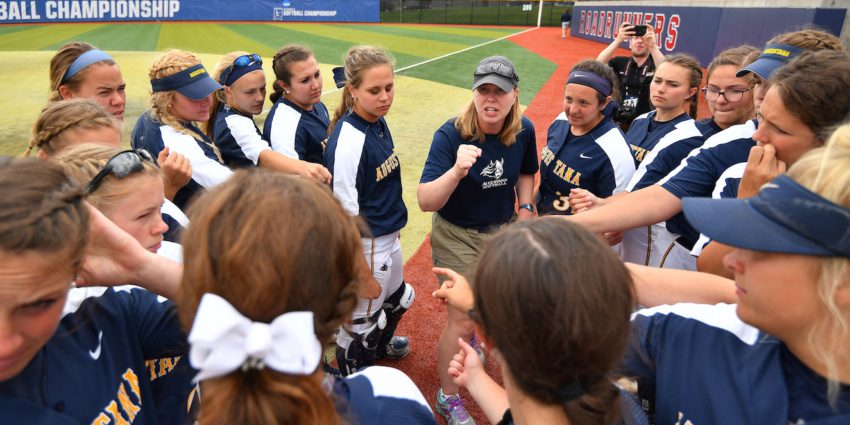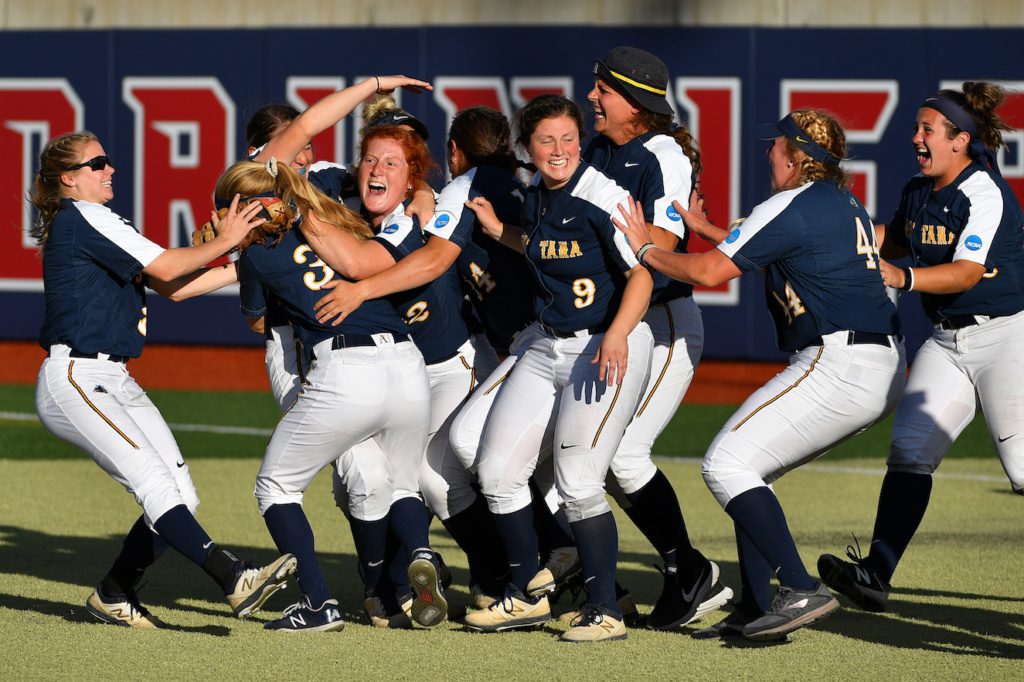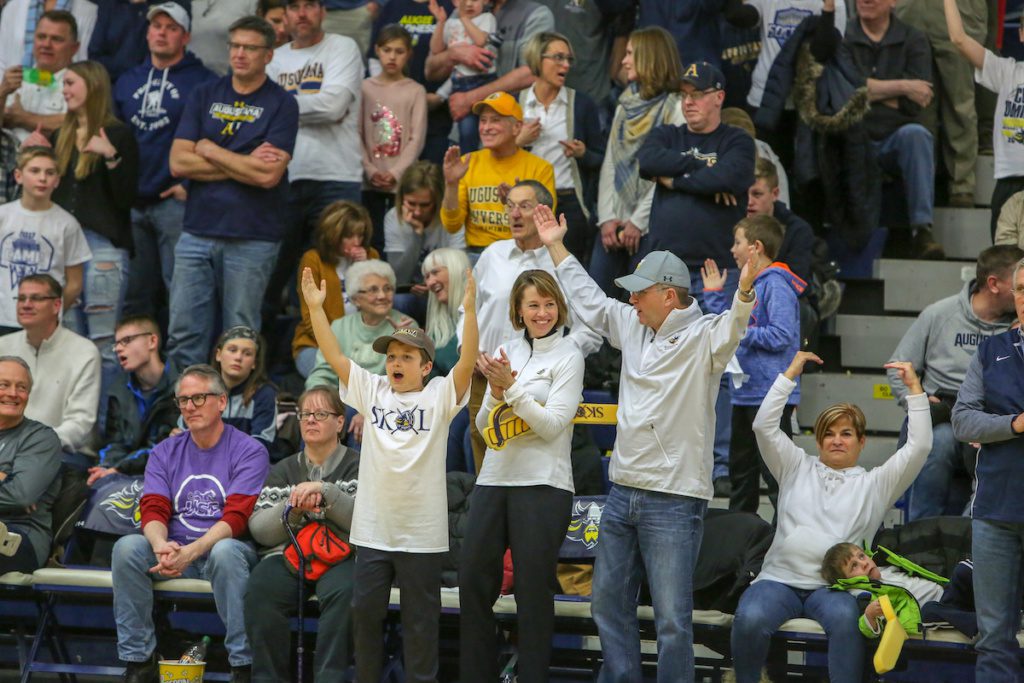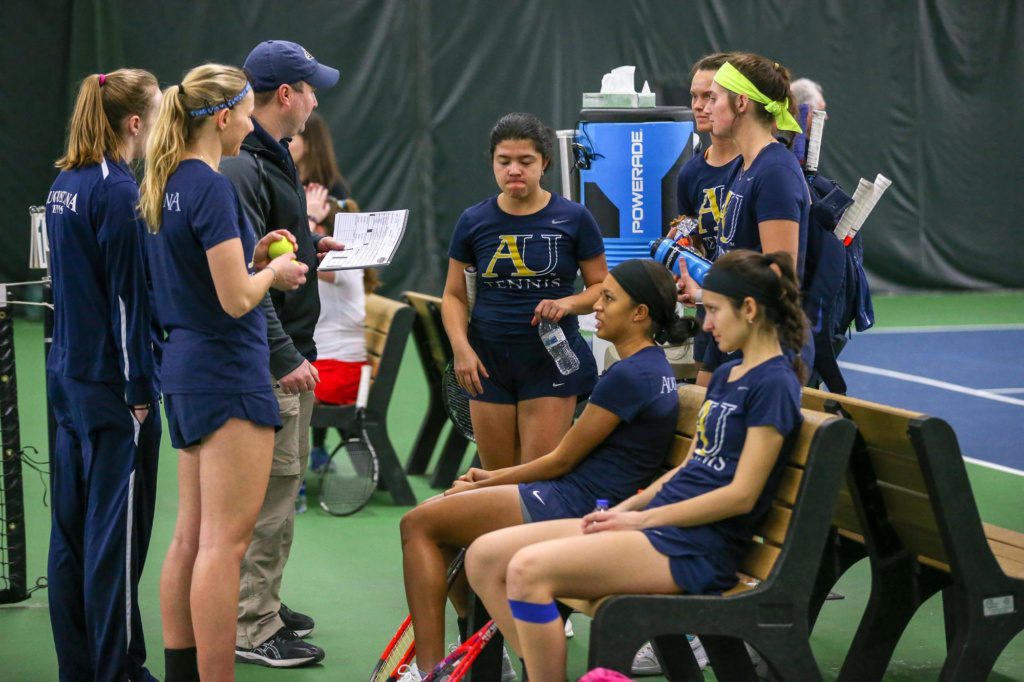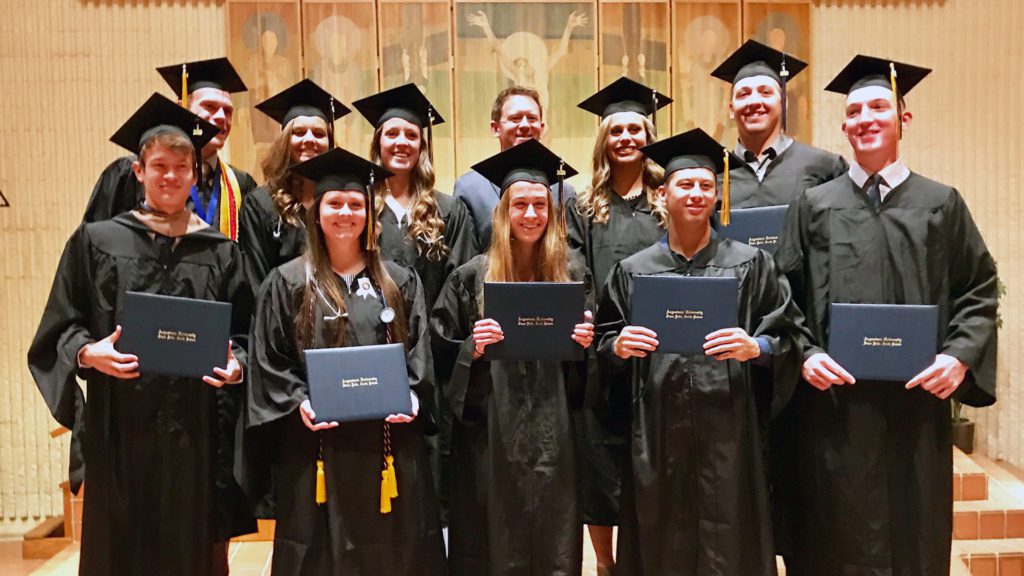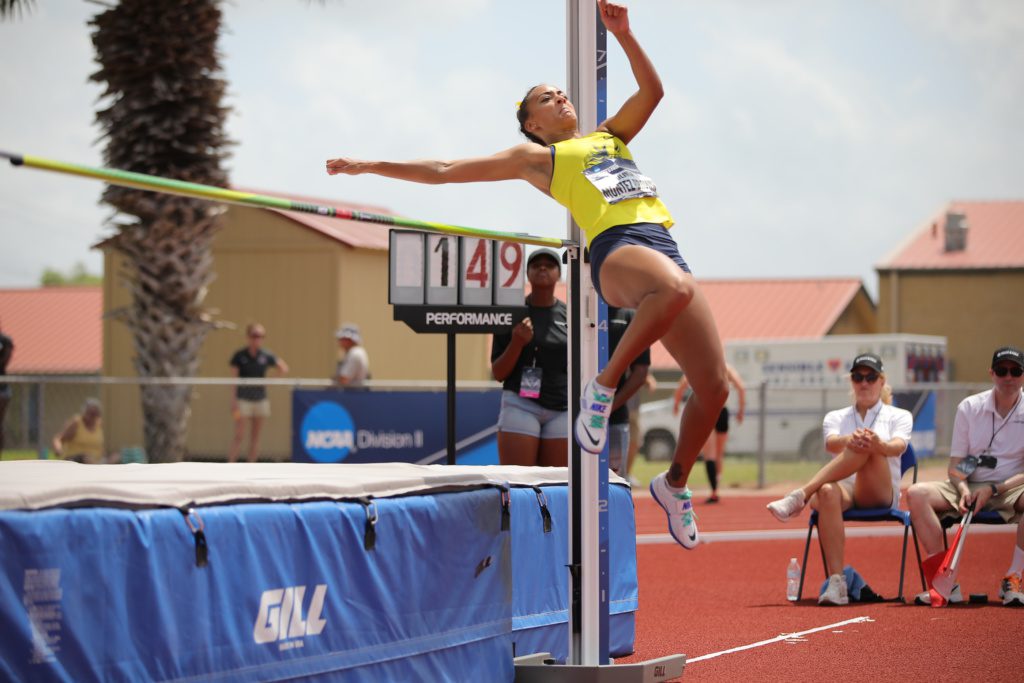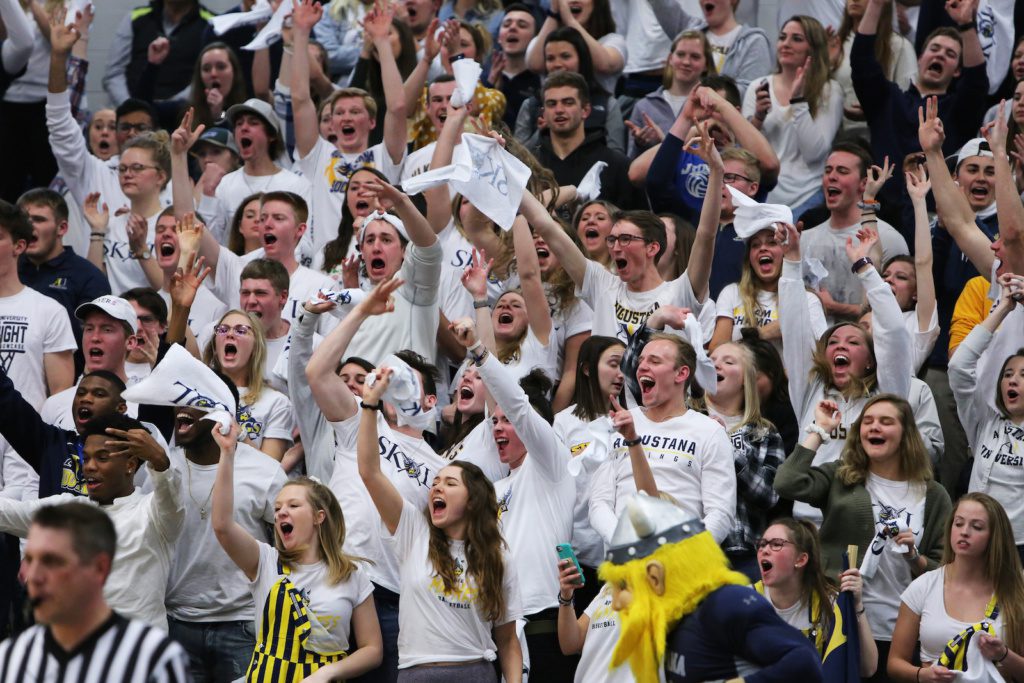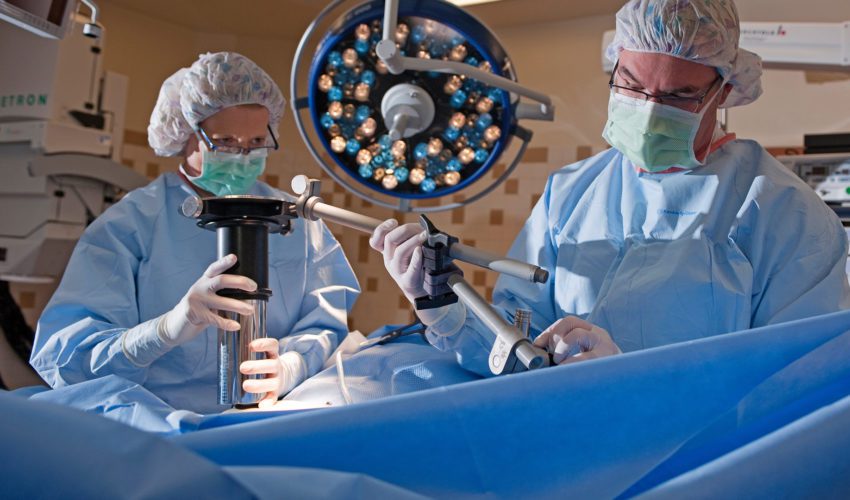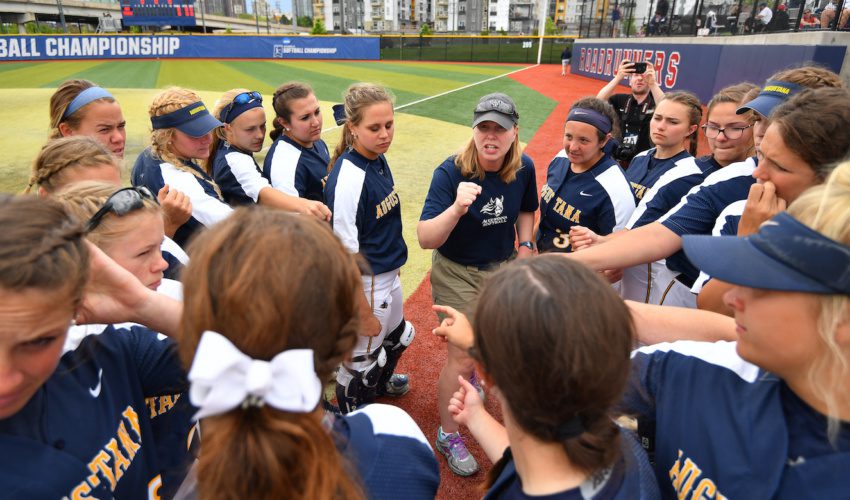Augustana maintains academic and athletic excellence on the road to Division I
July 8, 2019
This paid piece is sponsored by Augustana University.
Augustana University’s 2030 vision includes many aspirational goals, from reaching a total enrollment of 3,000 students to significantly elevating the on-campus experience.
But one of the more public-facing elements is a planned transition to Division I athletics. And when Augustana shared its hope for the move late last year, response from the community was instantaneous.
“As Sioux Falls continues to grow, and with the community’s support for strong academic programs, the arts and athletics, the Augustana Board of Trustees shares the optimism that people are ready to invest in a Division I athletics program because of the other benefits it can provide to the university and its regional profile as well as to the city,” university president Stephanie Herseth Sandlin said.
Augustana views a move to Division I as part of “a logical progression toward positioning ourselves to be a top regional university,” she added.
“It’s interrelated with our other goals. If we hadn’t included a transition to Division I, I think a lot of people would question why not, given how we’re looking to position ourselves for the future and how we can grow with the Sioux Falls community.”
The other goals of Vision 2030 include offering new academic programs and graduate degrees; expanding the performing and visual arts; growing enrollment and enhancing diversity among students, faculty and staff; and investing in the physical campus to include an expanded and renovated student union and new student housing. The university is now going through an extensive strategic planning process to identify the specific tactics and needs to meet all the goals by 2030.
“So many community and strategic partners were glad to hear of the robust process we’re undertaking, and they’re very eager to innovate with us and find win-win opportunities,” Herseth Sandlin continued. “They’ve recognized that a stronger Augustana, in a variety of ways, can enhance economic development and lead to a stronger community as a whole if we collaborate effectively.”
The transition to DI
Nearly 13 years ago, in response to the former North Central Conference breaking apart, Augustana made the difficult and deliberate decision to remain a Division II athletics program and invest more resources to enhance competition, excellence and success. As a result, the university has made a name for itself on the fields and on the courts.
Today, a proactive assessment within the broader and longer-term vision for Augustana includes a transition to Division I, for athletics and for the university as a whole, made easier because of the investments and achievements over the past 12 years.
Augustana athletics has had unprecedented success in the past 10 years. The university now has five Division II team national titles, including three in the past five years: men’s basketball in 2016, baseball in 2018 and most recently softball.
“Making the move from the Northern Sun Intercollegiate Conference (NSIC) to a Division I conference is a goal that will likely take some time,” said Josh Morton, director of athletics. “But we are excited and invigorated about what the future holds. We hope to secure a new conference invitation by December 2020.”
It’s a much different process for Augustana than it was for others who transitioned over a decade ago, Herseth Sandlin added.
“I think some people thought that when we announced we were pursuing a Division I transition that it was an automatic change. Even when we secure an invitation, there will still be a lot of work to do,” Herseth Sandlin said.
Numerous steps occur when a university transitions to Division I:
- Once Augustana receives a conference invitation, the university then may submit its reclassification paperwork and a fee to the NCAA by June 1 of any given year. The four-year reclassification begins that fall.
- The NCAA outlines annual parameters during the four-year time period that include an updated strategic plan and a self-study.
- During the reclassification period, teams are eligible for regular-season conference play, and, in some instances, conference tournament play as well.
- Teams are not eligible for NCAA post-season play during the four-year reclassification; however, some sports will be eligible for other non-NCAA post-season opportunities.
The university has formed a steering committee and several task forces that have met numerous times and also retained a consultant to refresh an analysis done in 2016. The committee will help guide the current strategic planning process for athletics to meet the university’s DI transition goals. What is determined in this work will become part of the larger Vision 2030 strategic plan that will be drafted this fall.
“A number of conferences across all divisions look for strong new members at various times,” Herseth Sandlin said. “We have set an aggressive timetable for securing an invitation, and we are committed to doing the hard work, securing financial commitments and demonstrating that Augustana will be a valued member of any league that may extend an invite.”
Augustana’s leadership has been having informal conversations with different conferences to open up communication as the planning process moves forward.
“It’s a parallel path,” Herseth Sandlin said. “We’re letting them know this is an aspirational goal and that we’ve undertaken certain steps internally. And we’re getting insight about their conferences and the appropriate timing for providing more information and having more conversations.”
Herseth Sandlin continued to note that the university must have a very clear plan and path before it secures an invitation.
“That’s why we felt it reasonable to set a milestone goal and to work as hard as possible to secure an invite to a conference or conferences by the end of 2020. We understand this will take a number of years, but patience is a virtue, and we need to continue to communicate as well as we can what the process is to transition.”
Morton added that the vision is for broad-based excellence on campus.
“That’s in all elements of our vision, and athletics needs to do its part too. It’s been nice to talk to people in the community about the whole vision for 2030. It’s not the athletic department on an island. I’ve been excited people are asking questions about the whole thing,” he said.
“Maintaining and elevating our successes is a big challenge. But we’re focused on what do we do now and what we can do better and what we need to do as we transition. My role is really to enhance the experience for our student-athletes.”
A focus on student success
The 2030 vision builds on Augustana’s reputation for academic quality and the preparedness of its graduates to contribute value immediately in the workplace and in their communities. In addition to transitioning to a Division I conference, there are many other goals the athletics steering committee is working on:
- Maintain academic and athletic excellence to recruit and retain exceptional student-athletes.
- Enhance the collegiate experience for student-athletes to position them for a lifetime of growth and success.
- Engage the Sioux Falls community to enthusiastically embrace Augustana as the hometown team.
“I’ve been here just over a year, and the one thing most striking to me is how many of our student-athletes are excellent in the classroom. They have to be because of the academic rigor at Augustana, and it’s so fun to come into that, and we have to maintain that,” Morton said.
Augustana has impressive numbers when it comes to the academic and career success of student-athletes. Maintaining academic excellence is the cornerstone of the Viking athletic program. About one in four Augustana students is a student-athlete, totaling more than 400 in 19 sports. Forty-seven student-athletes were named to the spring semester dean’s list, an honor for full-time students whose grade point averages are 3.5 or above. For the 2018-19 academic year, Augustana had 215 All-Academic Northern Sun Intercollegiate Conference athletes, which requires 3.2 GPA or higher. In other words, more than half of the student-athletes were recognized as All-Academic by the NSIC.
Investing in experiential learning opportunities for the athletics program is another important aspect of Vision 2030. The baseball team will travel to the Dominican Republic in 2020 with Dr. Stephen Minister to enhance their cultural competencies and understanding of ethical issues.
Student-athletes also routinely intern at organizations in the region and around the world such as Sanford Health, the Sioux Falls Skyforce, Northwestern Mutual and South Dakota Equity Partners. In a recent survey, 100 percent of responding student-athletes reported participating in an internship or clinical experience. The depth of this experiential learning, coupled with personalized mentoring from dedicated faculty, permits graduates to launch their careers confidently. Among Augustana’s most recent graduates, 98.7 percent of student-athletes were employed or enrolled in a graduate program in their chosen field within six months of graduation.
“We’re helping them develop as athletes but also as servant leaders,” Herseth Sandlin said.
“Faith is important to so many of our student-athletes. Their health and well-being, in addition to their academic performance and career planning, all are areas we’re evaluating further to better understand what more we can do now and in the future. Some of what may be required at the Division I level may be different, but we’re set up well because academic excellence and student success has been a focus of ours already.”
Increased brand awareness
The metaphor Herseth Sandlin often hears about college athletics is that it serves as the front porch for many into the university.
She already has heard from people who are looking forward to attending and bringing family to Division I athletic events.
“People already make time in their schedules to attend our performing arts and athletics events, but if we take it to the next level and enhance the experience, we can serve the interests of the university, the broader community and those families looking to have Augustana play a larger role in their lives,” she said.
A vibrant athletic program brings students, staff, alumni and fans together, Morton added.
“It’s a unique combination, where there’s one place on a Saturday for basketball or a Tuesday for volleyball, where we can gather all these groups together for a common cause,” he said. “Athletics is uniquely situated to be that vehicle.”
As Augustana athletes travel to other Division I communities, awareness of the Augie name also will grow.
“Think of the NCAA college basketball tournament,” Morton said. “Whether you’re a college basketball fan or not, you may fill out a bracket and learn about universities that might not have been familiar to you. In our country, athletics can do its part to elevate the profile of a university.”
And while there’s lots of enthusiasm for the planned move, Augustana recognizes some people also have reservations.
“We have spent time with many individuals in our community who have expressed concerns and also with those who are excited — we are happy to have those conversations and will continue to do so,” Herseth Sandlin said. “I have found when people take us up on the opportunity to hear more of what we’re thinking and planning, often their reservations are diminished and they’re more open to what we’re trying to do in positioning Augustana for the future. I think they better understand we’re not going to do anything without moving cautiously but confidently forward.”
It’s clear, though, that Augustana supporters want a Division I program that’s competitive, she added.
“And we need to understand what that’s going to take. We are going to need broad support from our campus community and the alumni base as well as business and civic leaders in Sioux Falls and the region to make this a reality.”
To see more on Augustana’s 2030 vision, click here.
Updated: Augustana’s 2030 vision calls for move to Division I university

